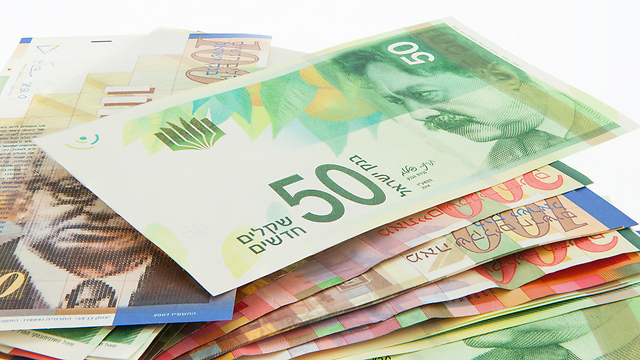
Many Israelis are set to carry a reduced tax burden.
Archive photo: Getty Images
People making up to NIS 20,000 a month are expected to keep a larger chunk of their salaries in the near future – between several hundred and NIS 2,000 a year – when a new Finance Ministry tax reform plan is implemented in January 2017. In contrast, those who earn monthly salaries of over NIS 60,000 a month are set to lose a hundreds, perhaps even thousands of shekels per year due to an increased tax burden under the new reform.
The reform was presented to the public on Tuesday by Finance Minister Moshe Kahlon. It centers around two major steps, set to cost the state of Israel around NIS 4 billion in 2017 and around NIS 4.8 billion in 2018. The first step is lowering the rates of income tax for those making less than NIS 20,000 a month.
The second step is reducing the corporate tax rate to a historic low. The current rate is 25 percent, and it is set to be reduced to 24 percent in January 2017, and then to 23 percent in January 2018. This step is intended to attract foreign businesses to Israel, and to prevent those who already have a presence in the country from choosing to leave.
The plan as presented on Tuesday shows significant effects for all seven existing tax brackets. Those who belong to the bottom three will pay less income tax and have a larger net gain of their salaries. In contrast, those who earn higher paychecks are set to pay more taxes than before.
The new reform will grant those who make up to NIS 6,000 a month an extra NIS 29 every month, which would accumulate to about NIS 350 a year. Those who make NIS 10,000 a month will gain NIS 65 from their reduced tax burden. Those making up to NIS 15,000 will gain an extra NIS 155 a month, and those making up to NIS 20,000 per month will make an extra NIS 89 under the new reform.
On the other hand, those with salaries of NIS 60,000 a month will lose about NIS 2,400 a year from their increased tax burden, and those who earn monthly salaries of NIS 100,000 are set to lose a yearly sum of about NIS 4,000.
One step intended to increase equality is the increase in an added tax, which is taken from those who make especially high salaries, and are already part of the seventh tax bracket (which is highest). The added tax has, so far, stood at 2 percent, and was only collected from those with an annual income of over NIS 803,532. Under the reform, the tax rate will increase to 3 percent, and will be collected from those with annual incomes of NIS 640,000 and above.
The reform will mostly affect lower-income people by moving tax bracket borders. For instance, the fact that the lowest tax bracket now extends to salaries 730 shekels higher than before means more people, who were previously paying a slightly higher tax rate, will now be paying less. While the monthly gains for those of lower incomes are fairly small, in aggregate they amount to several hundreds of shekels in many cases, and sometimes thousands.


















